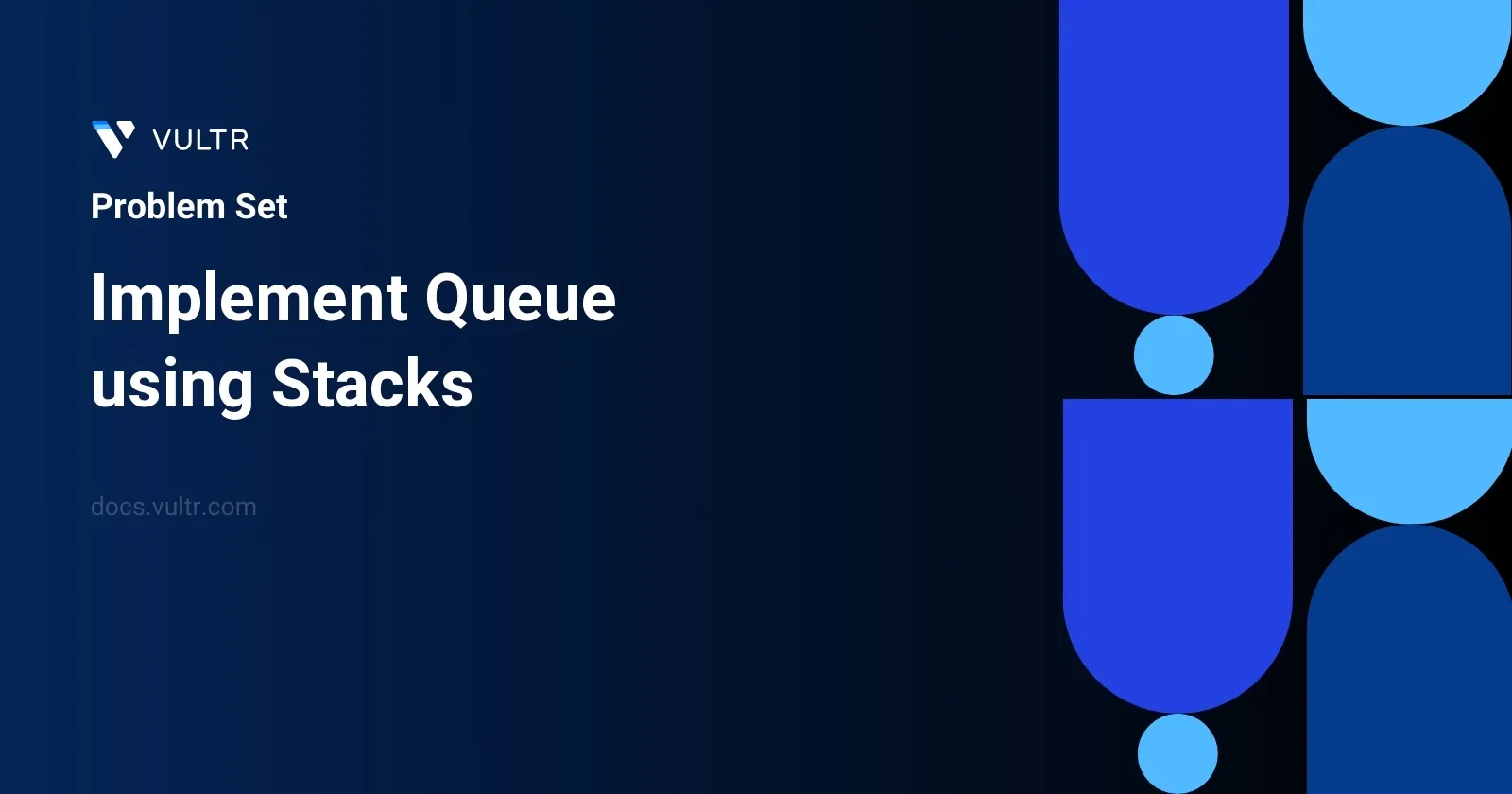
Problem Statement
You need to construct a First In First Out (FIFO) queue utilizing only two stacks. This custom queue class, named MyQueue, implements all traditional queue operations such as enqueueing (pushing) elements to the queue, previewing the front element (peek), dequeueing (popping) the front element, and checking if the queue is empty. To meet the challenge:
push(int x)adds an elementxat the end of the queue.pop()removes and returns the element at the front of the queue.peek()returns the front element without removing it.empty()checks if the queue is empty and returns a boolean accordingly.
The implementation must use only basic stack operations: push to top, pop from top, peek top, size, and empty check. If the language lacks native stacks, simulate them using lists or deques while adhering strictly to the allowed operations.
Examples
Example 1
Input:
["MyQueue", "push", "push", "peek", "pop", "empty"] [[], [1], [2], [], [], []]
Output:
[null, null, null, 1, 1, false]
Explanation:
MyQueue myQueue = new MyQueue(); myQueue.push(1); // queue is: [1] myQueue.push(2); // queue is: [1, 2] myQueue.peek(); // returns 1 myQueue.pop(); // returns 1, queue becomes [2] myQueue.empty(); // returns false
Constraints
1 <= x <= 9- At most
100calls will be made topush,pop,peek, andempty - All calls to
popandpeekare valid (the queue will not be empty)
Approach and Intuition
A queue operates on a FIFO (First In First Out) principle, whereas a stack works in a LIFO (Last In First Out) manner. To implement a queue using only stacks, we use two stacks:
- stack1 for enqueueing elements (push operation).
- stack2 for dequeueing or peeking the front element.
Operations:
- push(x) – Always push onto
stack1. - pop() – If
stack2is empty, transfer all elements fromstack1tostack2(reversing their order), then pop fromstack2. Ifstack2is not empty, just pop. - peek() – Same logic as
pop()but return the top ofstack2without removing it. - empty() – Return true if both
stack1andstack2are empty.
This dual-stack approach ensures that enqueue is efficient and dequeue honors the queue’s FIFO behavior by reversing order when needed. It's a classic exercise in structural transformation using simple building blocks.
Solutions
- Java
public int getFront() {
if (!s2.isEmpty()) {
return s2.peek();
}
return front;
}
The solution involves implementing a queue using two stacks in Java, specifically focusing on the getFront() method. This method efficiently retrieves the front element of the queue.
- Ensure that two stacks,
s1ands2, are utilized, wheres1is for enqueue operations ands2is for dequeue operations. - In the
getFront()method:- First, check if
s2is not empty. Ifs2has elements, the next element to be dequeued (the front of the queue) is the top element ofs2. Uses2.peek()to retrieve it. - If
s2is empty, retrieve the front element from the previously savedfrontvariable. This condition is useful when all elements are transferred froms1tos2ands2is subsequently emptied.
- First, check if
This method ensures constant time complexity for retrieving the front element of the queue, providing an efficient way to mimic queue operations using stack-based mechanisms.